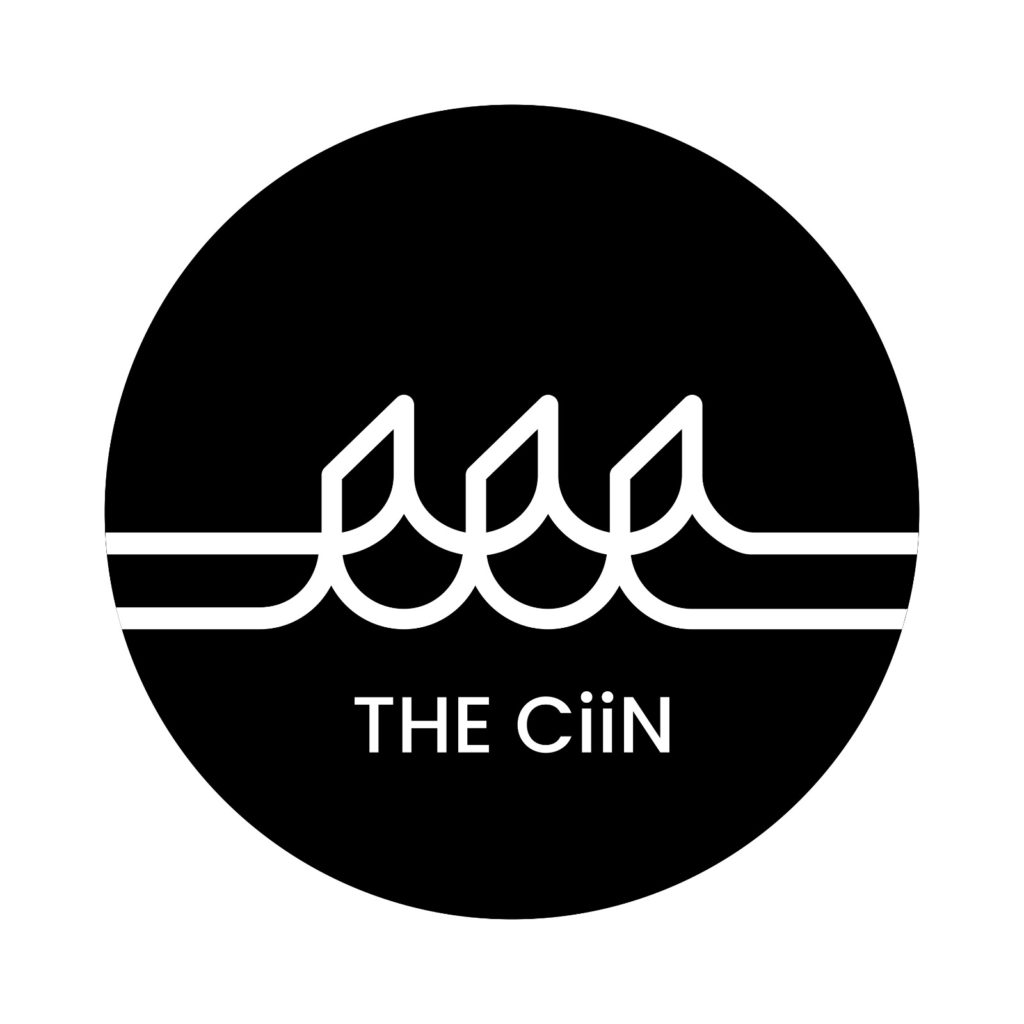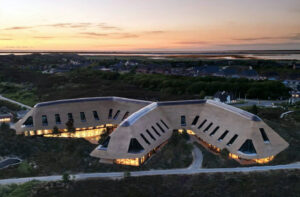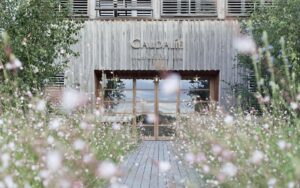FISKEBAREN – SEAFOOD OASIS
Poised in the city’s meatpacking district, the menu at this Copenhagen stalwart is a love letter to the ocean. The buzzy dining room may be casual by design, but it’s serious about flavour. From light bites to full tasting menus, ingredients are off-the-boat fresh. Choose from six kinds of oysters, each with nuanced tasting notes, catch of the day – perhaps mussels from Limfjord in apple cider or Norwegian king crab with roasted salsify and pickled morels – and a concise dessert list including a Nordic cheeseboard.
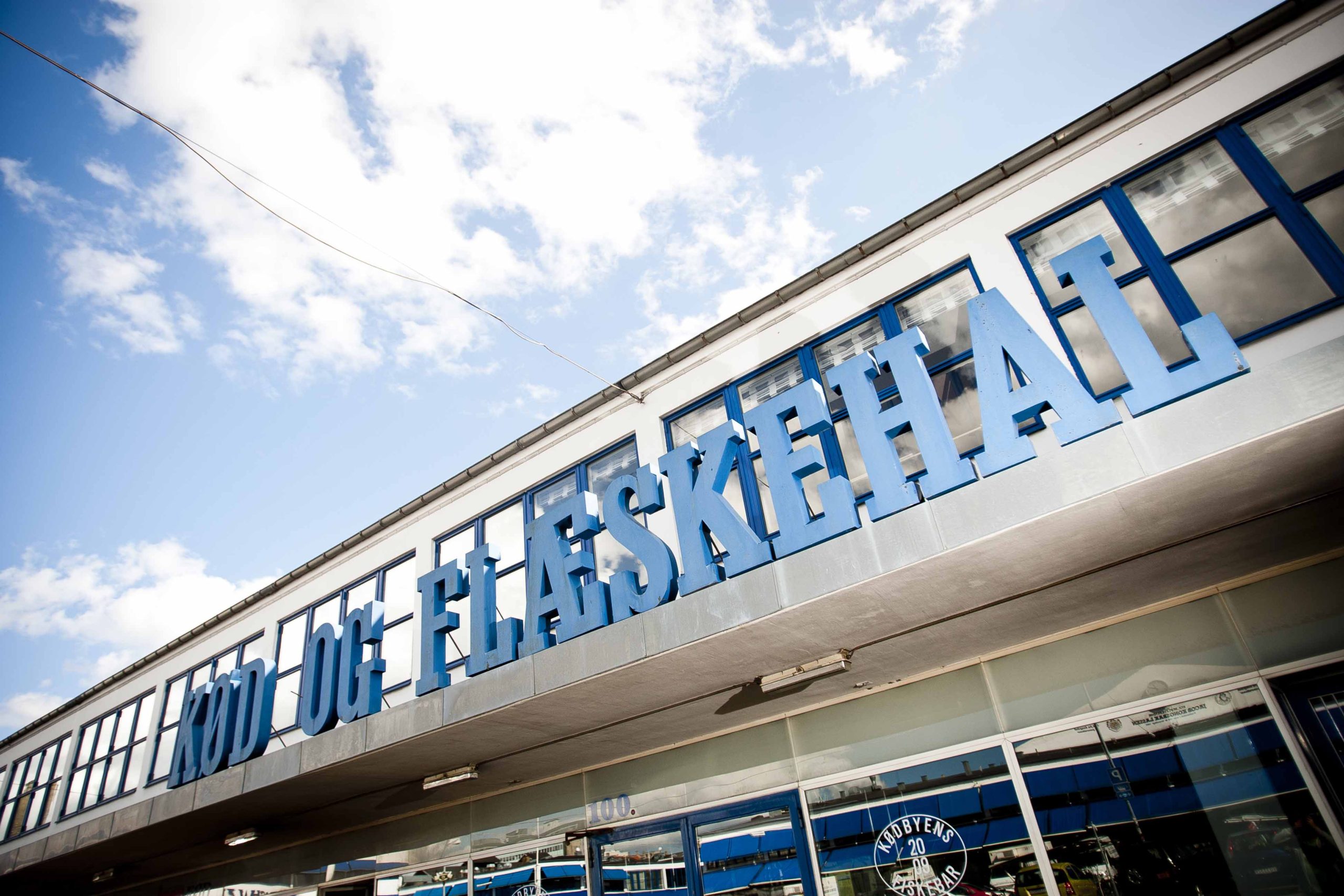
At Fiskebaren it is all about fish and seafood, fresh, healthy, and delicious food and good wines. This buzzy, industrial-style restaurant is set – somewhat incongruously – in a former butcher’s shop in the old meatpacking district, and was one of the pioneers in transforming the area into a leisure destination. Menus feature freshly prepared seafood dishes which are based around the latest catch, with oysters being a specialty. The terrace is a popular spot come summer.
Co-founded in 2009 by former Noma sommelier-turned-wine-maker Anders Selmer, the façade does little to signify the restaurant’s seafood specialism, as the oversized lettering on the roof reads Kød og Flæskehal (meat and pork hall) and sits beneath a sultry stone cow. Inside, Fiskebar offers a welcoming and vibrant retreat. Whilst not entirely cosy, it’s calming and comfortable; a place one could easily stay all day. The 100-cover dining room, positioned around a rectangular central bar, has deliberately honoured its slaughterhouse roots. Think original wall tiles, concrete floors and meat hooks used as coat hangers, albeit a 1,000-litre floor-to-ceiling aquarium does pay homage to its more recent incarnation.
Awarded a Michelin Bib Gourmand in its very first year (which has been retained to this day), the restaurant’s stark and simple backdrop brings due prominence to plates of food bursting with colour, all exquisitely comprised using ingredients ethically sourced from the Scandinavian shores.
Fiskebar sources its vegetables from the family-run biodynamic farm Kiselgarden, located a forty-minute drive west of the city, whilst the rest of the fish is sourced from the shores of Denmark, Sweden and Norway. Every fish is sourced from coastal fisheries.
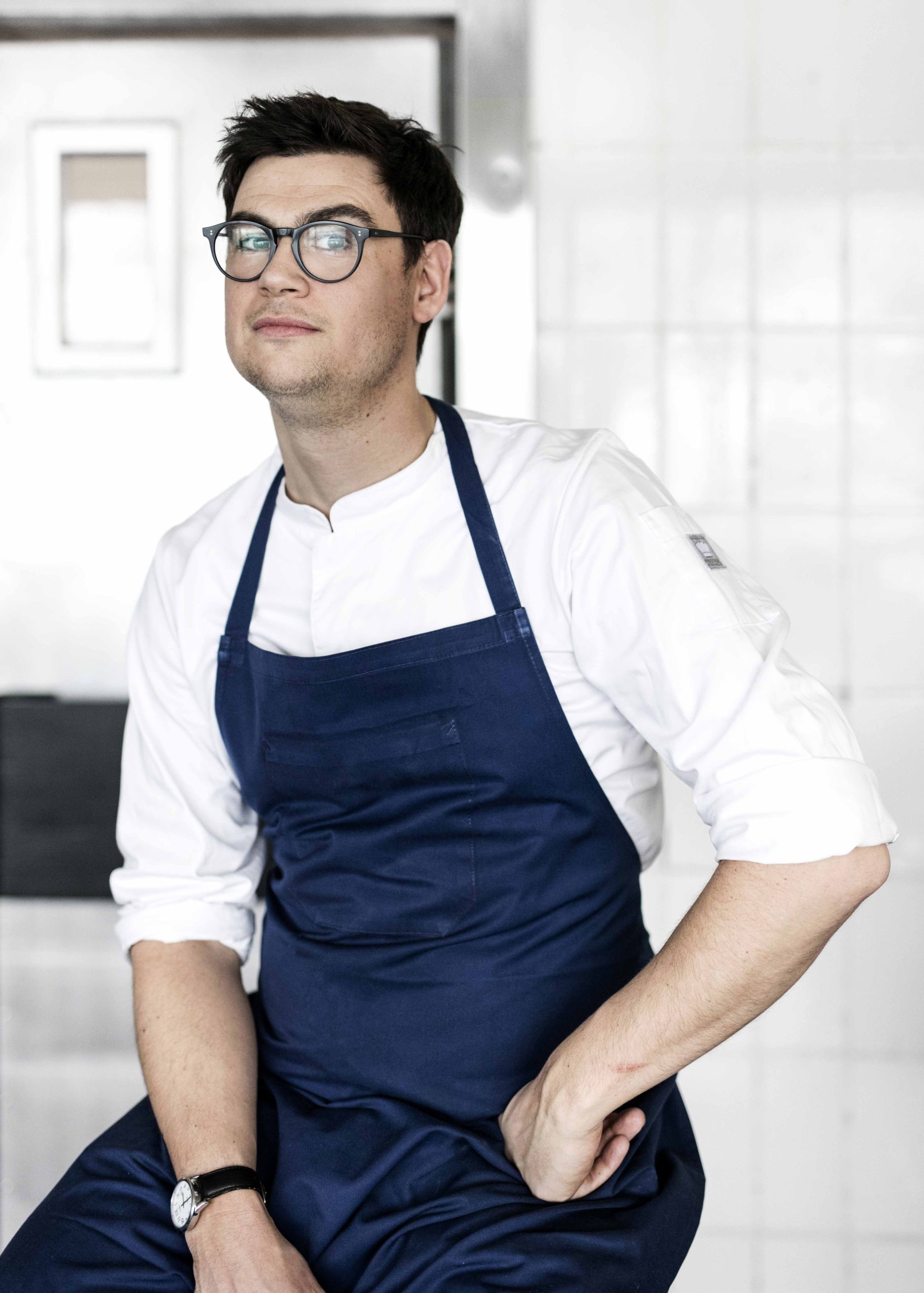
Our Travel editor, José Berrocoso, dives into the world of the seafood. He chats with Jamie Lee, Head Chef, to learn more about his journey, Fiskebaren and the future of the gastronomy.
Originally from Truro, before spending his childhood in north London, Jamie started his career working under Jason Atherton at Gordon Ramsay’s Maze, before a stint at 1 Lombard Street in The City. Following this, he relocated to Australia when he was asked to open Maze in Melbourne. At the same time he began to develop an interest in New Nordic cuisine, a nerdiness installed by the first Noma cookbook. Before he joined Fiskebaren, Jamie worked with Paul Cunningham in Tivoli.
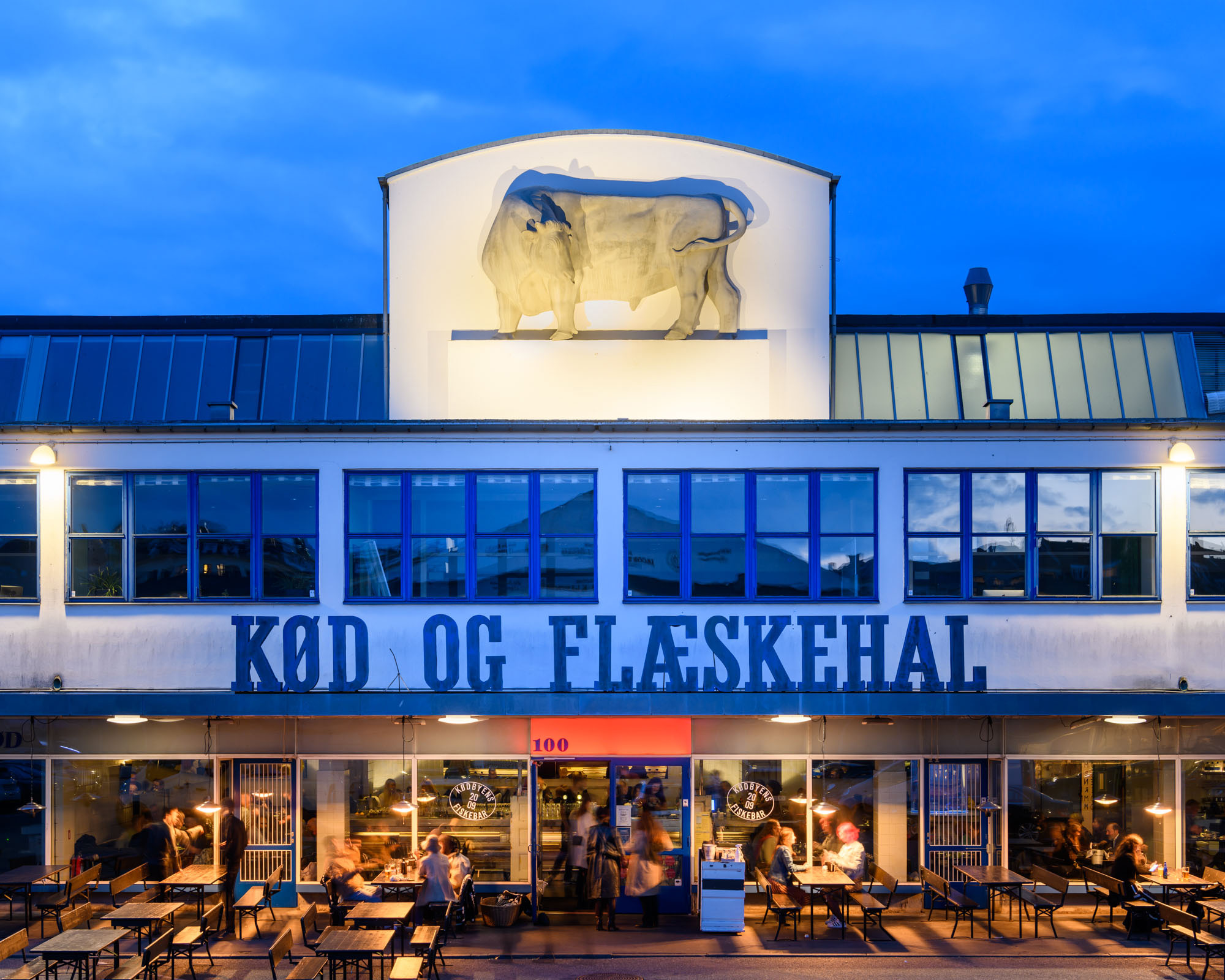
What is your fondest food memory of your childhood in the United Kingdom?
Jamie Lee: I have lovely memories of munching on freshly caught fish by the seaside during my childhood in the UK. It was always such a tasteful and uncomplicated experience.
How did your culinary career start and why did you want to become a Chef?
JL: As a child, I began working in a bakery and became enticed by the process of turning basic ingredients into a beautiful loaf of bread. From that moment on, I was hooked.
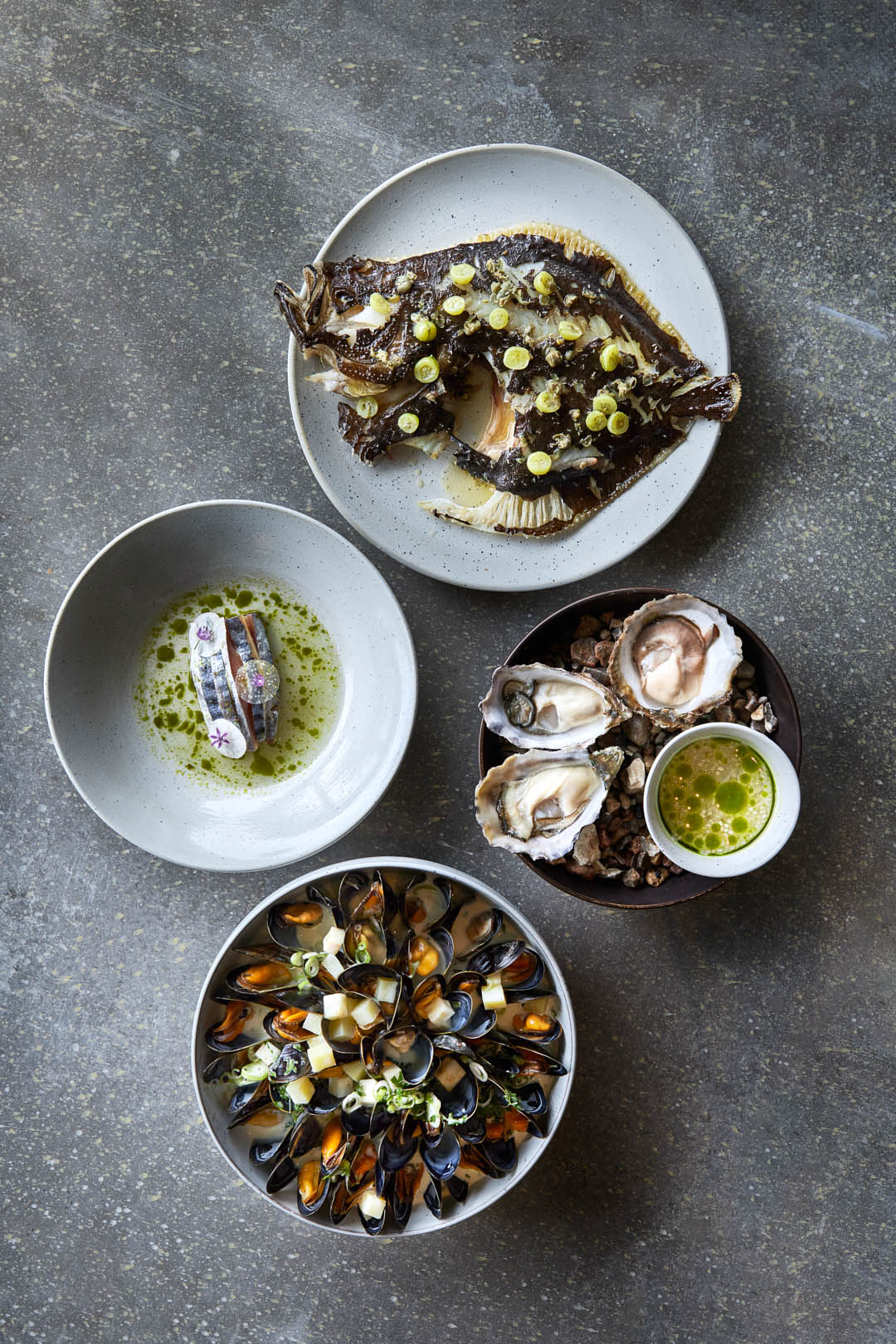
Throughout your career, who has been your greatest inspiration?
JL: Throughout my career, I have had the privilege of working under some exceptional chefs, including Gordon Ramsey, Jason Atherton and Paul Cunningham, among others. Each of them has imparted their unique set of skills and cooking techniques, which has helped me grow as a chef. Reading about the work of Marco Pierre White and Anthony Bourdain has also been a source of inspiration. But my biggest source of inspiration is the nature surrounding us. The sea and the land and everything that comes with the frutility of it. Which should also serve as one of our greatest reminders of how much we need to protect it.
Three words to describe the current Danish cuisine.
JL: The cuisine being served at the moment is made from fresh, locally-sourced ingredients that are also sustainably produced.
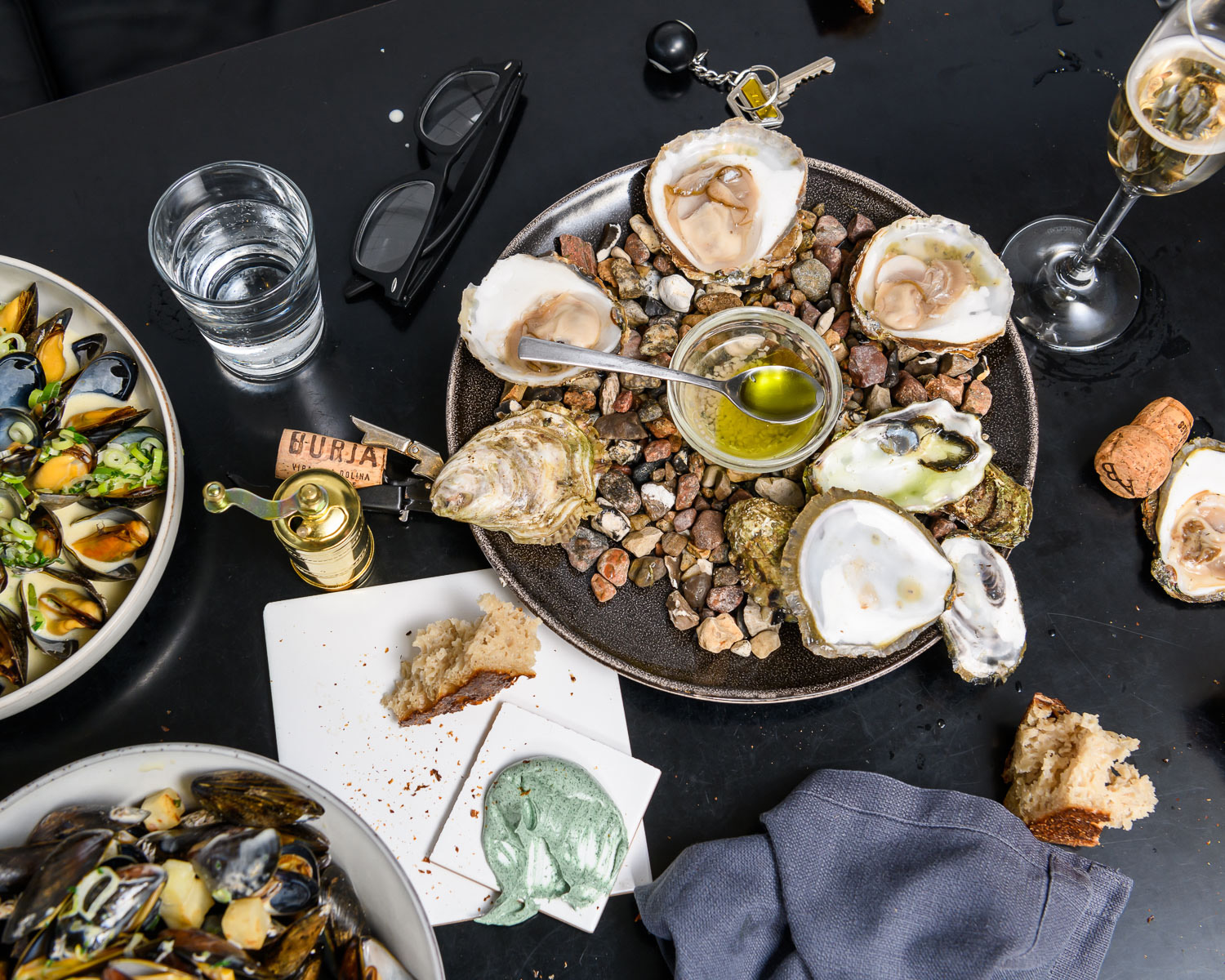
What dish epitomises Denmark?
JL: One of our most recommended dishes this season is the lightly cured brill. It’s served with sea lettuce, burnt onions and smoked mussel cream, and offers an excellent showcase of the incredible local Danish products we have available. The flavours are smoked, sweet and sour. Those I would call the epitome of the Danish kitchen.
How would you define the DNA of Fiskebaren?
JL: The DNA of Fiskebar is all about serving high-end seafood in a relaxed comfortable environment. Naturally, only the best quality produce is used – the best you can find. Seasonal vegetables arrive in the morning from a biodynamic farm north of Copenhagen. Afternoon comes and in steps, the forager, holding an armful of forest herbs. Then there is the fish. Moving hand in hand with Jesper the fishmonger guarantees the use of only sustainable fish caught small scale and inshore. The fish is exceptional. We catch wild European oysters from the oyster banks of Limfjord in Denmark, they are delivered in the morning and in the evening they are shucked in the kitchen. It all starts with the raw fresh ingredients.
What makes the Meatpacking District the perfect setting for a fish restaurant?
JL: Back in 2009, we ventured into the once run-down meatpacking district, which was predominantly industrial at the time. Over the years, more businesses have set up shop in the area, breathing new life into it. Today, it has become a thriving hub for innovation and creativity, with a vibrant atmosphere that buzzes both day and night. During the summer months, the district truly shines with plenty of outdoor space to enjoy right in the heart of Copenhagen.
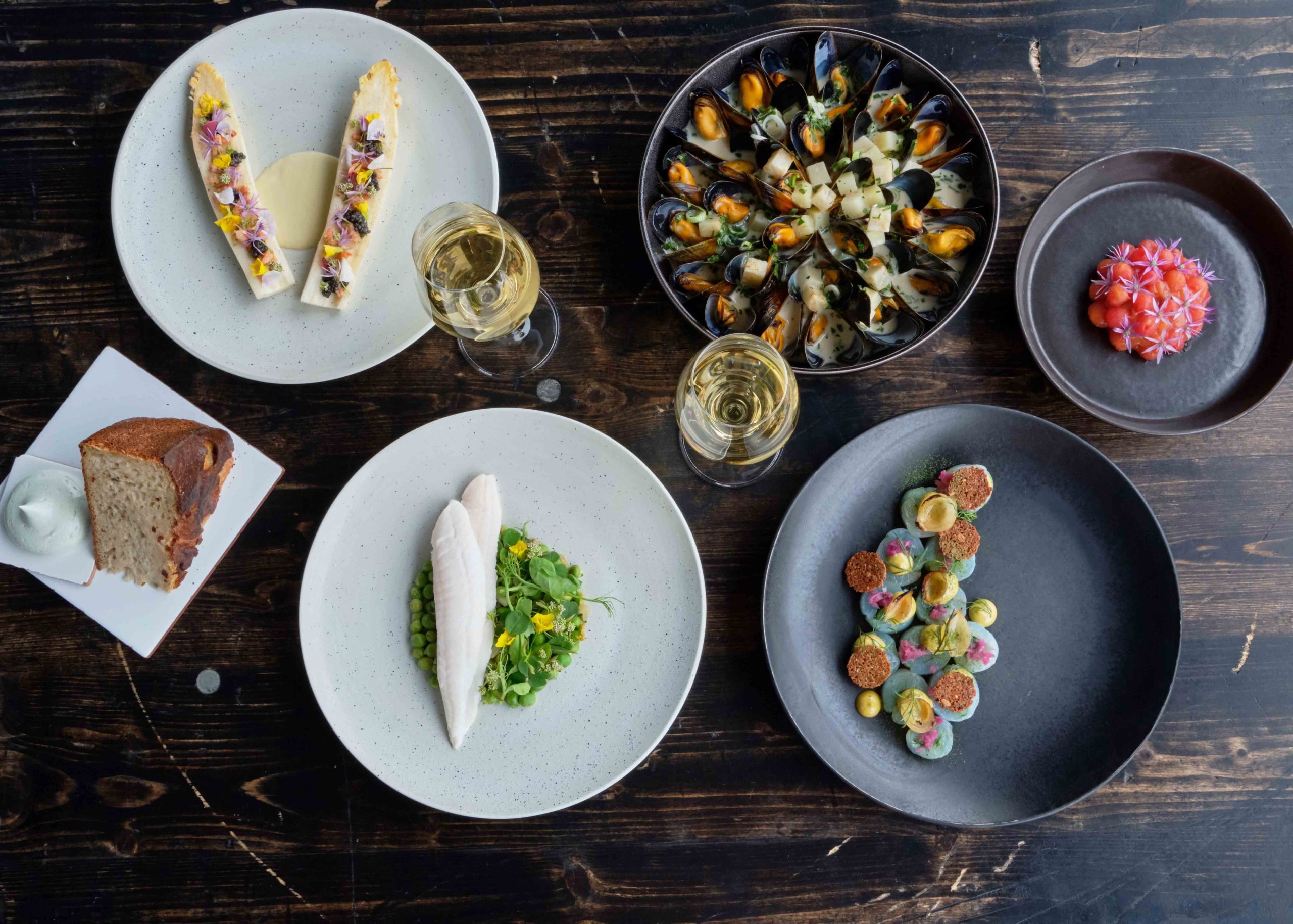
What traditional techniques do you use the most?
JL: Since we heavily depend on local seasonal produce from both land and sea, we must preserve them when they are at their freshest. This is achieved through smoking, salting, curing, and pickling, which allows us to be more creative during the colder months.
Where are most of your ingredients from? What is your favourite ingredient?
JL: Our ingredients are mostly sourced from local day boats along the Danish coastline, as well as vegetables from organic farms and foragers who collect ingredients from both land and sea. I can’t say I have a favourite ingredient since there are so many unique and exciting species to discover from the sea. However, I am particularly fascinated by the various types of seaweed and their ability to taste like truffles or mushrooms. It seems like we are only scratching the surface when it comes to exploring the potential of these ingredients.
Hiramasa, razor clams, mackerel, trout, turbot… How crucial are local suppliers to your cooking?
JL: Our local suppliers are absolutely critical to our restaurant’s daily operations. Every morning, we eagerly await the phone call from our trusted fisherman to hear about their latest catch. It’s always exciting to see what’s available and to start brainstorming new menu items based on what we have to work with. We pride ourselves on allowing the natural flavors of our produce to shine through, without over-manipulating it in any way. Thanks to our close relationships with local suppliers, we’re able to get our hands on the freshest possible ingredients – often within just a few hours of them being harvested or caught. Our team works closely with small day boats that use gentle, sustainable fishing practices, so we can feel good about the environmental impact of our sourcing choices. With so many new and exciting ingredients to work with, we’re constantly updating our menu to offer our guests the very best dining experience possible. In fact, we create a new twice a day – one for lunch, and one for dinner.
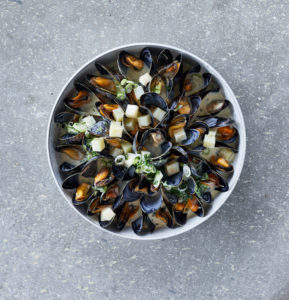
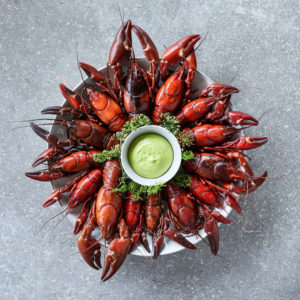
What made you interested in sustainable seafood?
JL: After working with seafood for over a decade, it’s become apparent how detrimental bad fishing practices can be to both the environment and fish populations, particularly with certain species on the decrease. As a chef, I always strive for sustainability and freshness in the dishes I serve to my guests. To achieve this, I opt for small local day boats that have a minimal environmental impact and target fish that naturally swim in our waters during the season. Additionally, we show respect for the fish by utilizing all of their parts, including the bones, liver, heart, and roe.
Tell us a bit about how you approach a dish?
JL: Our menu is dictated by what ingredients are in season so I really get my inspiration from the nature. I usually come up with an idea for a dish and create a process for it. I involve the team who will provide their input and then a phase of conducting tests begins before we add it to the menu. We always remember to ask ourselves if a new dish lives up to our values and concept for the restaurant.
Is there any crazy thing you’ve pulled off that really stands out?
JL: I cooked a huge fish feast for a crowd of 300 at the Burning Man festival, which was pretty tough given the scorching desert heat. But no matter what, I made sure to stick to my values throughout the whole ordeal.
How important do you feel wine is to the dining experience?
JL: At Fiskebaren, wine plays a significant role in enhancing the dining experience. With over 22,000 bottles in our cellar, we follow a wine philosophy that aligns with our food philosophy. Our focus is on wines that accurately showcase the climate and ecology of individual vineyards with minimal intervention. This approach elevates the dining experience to a whole new level.
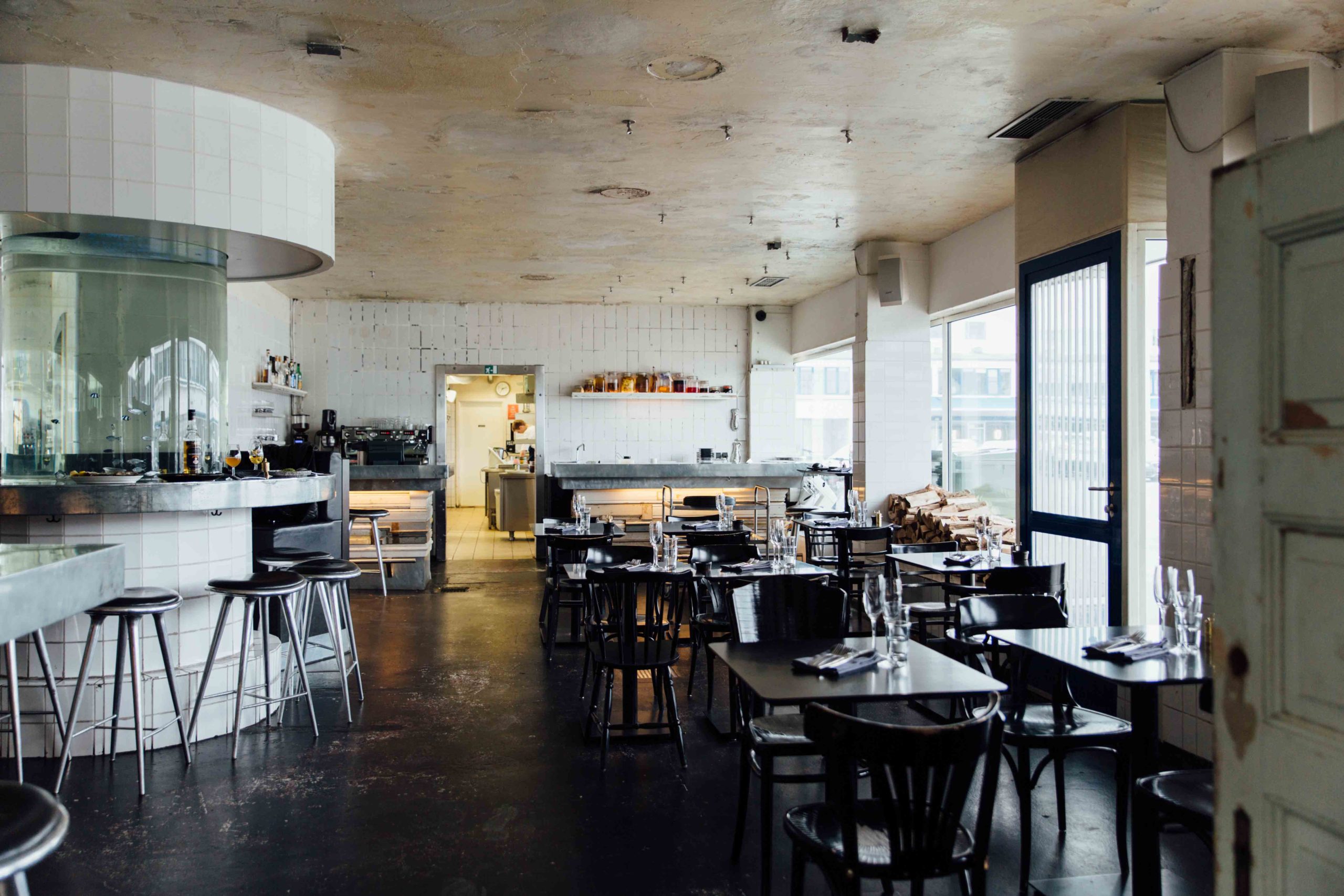
What effect do you think the New Nordic style has had on the culinary world stage?
JL: In my opinion, the recent emergence of Nordic-style cooking has encouraged people to prioritize local ingredients and seasonal products in their restaurants. We have moved away from exotic ingredients not being natural to the geographical area being prestige. I believe this development has been crucial for both learning what freshness does for the taste of our food, but also importantly for our planet. The results you achieve when you use the freshest and best quality ingredients are purity, simplicity, and freshness in your dishes, while also preserving and honouring the unique flavours of the local area. We know it from wine where the minerals in the ground are part of defining the flavours of the wine. It’s the same with the food we eat. The environment it has grown in – or swam in – defines the flavour.
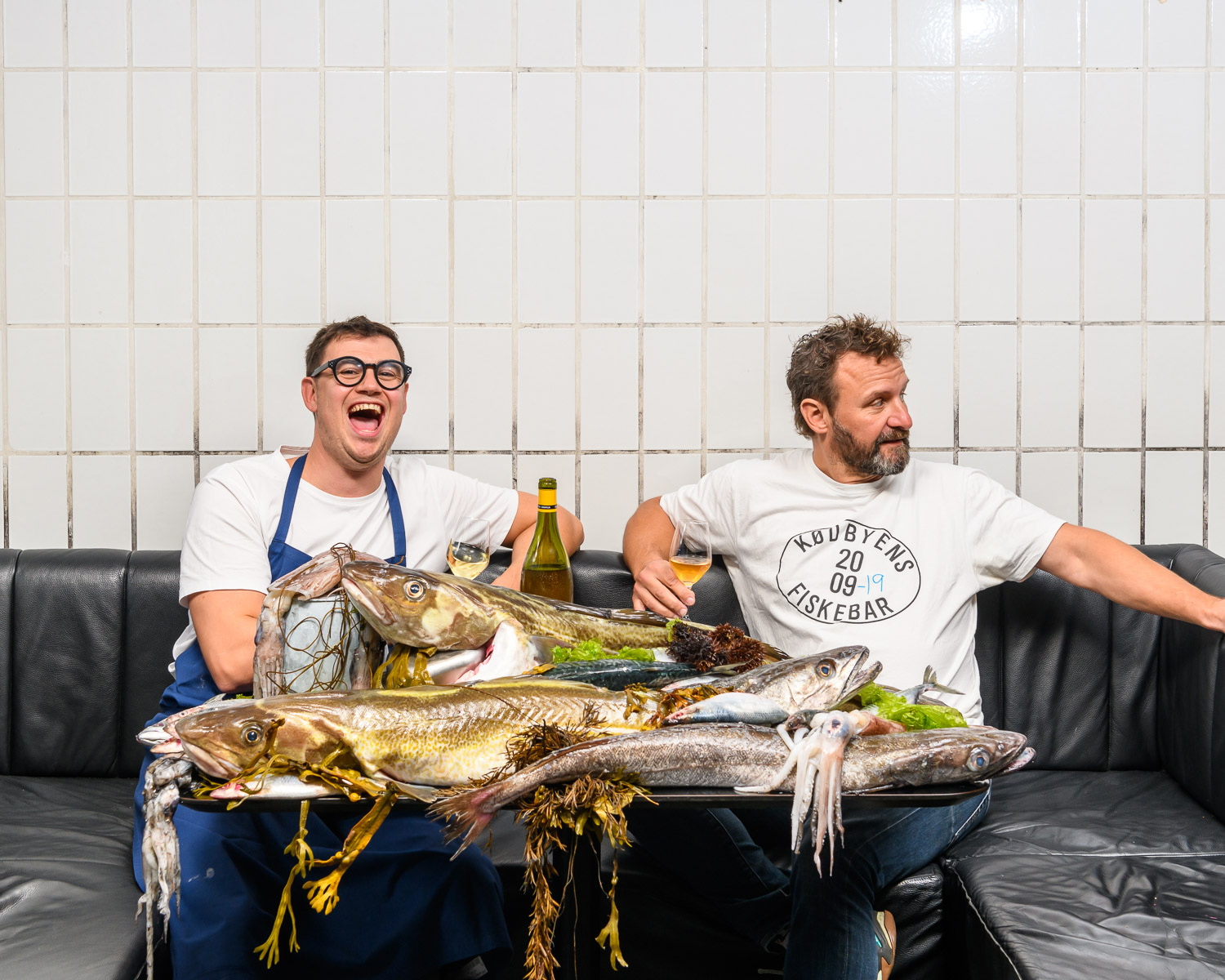
How do you see seafood evolving in the next 50 years?
JL: That’s an excellent question, although it can be quite daunting. In the next 50 years, the seafood industry is expected to undergo significant changes and advancements. Due to growing concerns regarding overfishing and the impact of fishing on marine ecosystems, there is likely to be a greater focus on sustainable fishing practices. This could entail implementing stricter regulations and promoting responsible fishing techniques. It would be fantastic if people and supermarkets could opt for more diverse seafood options and source them from sustainable local sources. To continually purchase the same types of fish, such as salmon, prawns, cod, and tuna, puts them at risk of being overfished, which consequently means that they will cease to exist. It’s also important to incorporate more of the fish into our diet, not just the fillet. We need to remember that this is a natural wild product. As these wild fish stocks decline, aquaculture is expected to play an increasingly vital role in seafood production. Advances in aquaculture technology and practices could lead to improved efficiency, reduced environmental impact, and a broader variety of sustainably farmed seafood. I sincerely hope that we can work towards a better future for our oceans through more awareness about the oceans, and the sealife in them.
